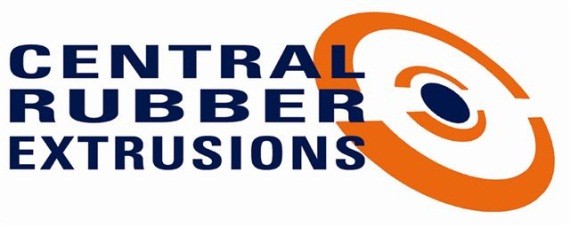Our Products
TESTIMONIAL
Working with Central Rubber Extrusions customer focused team has been extremely refreshing. Their product knowledge, quality, and quick service have been crucial to help us serve our customers. We look forward to continuing a great relationship with their team.
Tony W. | Project Manager
Every customer is unique in their needs and it is Central Rubber’s mission to be your quality supplier of choice!
Central Rubber Extrusions has earned the loyalty of customers in diverse markets by serving as their true partner. From best-in class materials and products, we offer individualized attention and support, and provide whatever it takes to meet your particular objectives. Regardless of the technical or business demands of your project, we work with you every step of the way to ensure it’s completion on time, within budget, and to your exact specifications with no Minimum Order Quantity.
Note: These materials can be cut to any width and length, per your requirement. Please call today for your size requirement and pricing. Toll Free: (800) 986-5177 or (618) 654-1171.
85 Duro Setting Blocks
85 Duro Setting Blocks – EPDM • Neoprene • Silicone
Setting Blocks — Discount Schedule
2,500 pieces per size ……………….. Less 10%.
5,000 pieces per size ……………….. Less 15%.
10,000 pieces per size ……………… Call for a quote at #800-986-5177.
Custom sized Setting Blocks are available. Setting blocks are not limited to the sizes shown and can be cut to any custom size, please call us for details.
Clear Mirror PVC Setting Blocks
Clear Mirror PVC Setting Blocks
This material can be cut to any width and length, per your requirement.
Please call today for your size requirement and pricing.
EPDM Blocks
EPDM “W” (Anti-Walk) Blocks

Minimum quantities may be required.
This material can be cut to any width and length, per your requirement.
Please call today for your size requirement and pricing
EPDM Side Blocks

Glossary
Abrasion: The surface loss of material due to frictional forces.
Absorption: The physical mechanism by which one substance takes up another substance (liquid, gas or vapor) into its interior.
Adhere: To cling or stick together.
Adhesion: Tendency of rubber to bond or cling to a contact surface.
Aging: To undergo changes in physical properties with age or lapse of time.
Aging, Accelerated: Tests run on various rubbers to find out, in as short a period as possible, the destructive influence of light, oxygen, heat and ozone.
Ambient Temperature: The surrounding temperature relative to the given point of application.
Bleeding: Migration to the surface of plasticizers, waxes or similar materials, to form a film or bead.
Blemish: A mark, deformity of injury which impairs appearance.
Blister: A raised spot in the surface, or a separation between layers, usually forming void or air-filled space in the profile.
Bloom: A dusty or milky looking deposit that sometimes appears on the surface of a molded product after molding and storage, caused by migration of liquid or solid to the surface. Not to be confused with dust from external sources.
Bond: The term commonly used to denote the attachment of a given Elastomer to some other member. Bonds may be classified by types, as follows: (a) Mechanical – purely physical attachment accomplished by such means as “through” holes, interlocking fingers, envelope design, riveting, etc.: (b) Cold – adhesion of previously vulcanized Elastomer to another member through use of suitable contact cements: (c) Vulcanized – adhesion of an Elastomer to a previously primed surface using heat and pressure, thus vulcanizing the Elastomer at the same time.
Brittleness: Tendency to crack when deformed.
Buna-N: See nitrile.
Buna-S: A general term for the copolymers of butadiene and styrene. Also known as SBR and GRS.
Butt Joint: Joining two ends of a seal whereby the junction is perpendicular to the mold parting line.
Cell: A single small cavity surrounded partially or completely by walls.
Cellular Rubber: Rubber products containing many cells or small hollow receptacles dispersed throughout the mass.
Closed Cell: A cell totally enclosed by its walls and hence not interconnecting with other cells.
Coefficient of Thermal Expansion: Average expansion per degree over a stated temperature range, expressed as a fraction of initial dimension. May be linear or volumetric.
Cold Resistance: Able to withstand the effects of cold or low temperatures without loss of serviceability.
Compound: A term applied to a mixture of polymers and other ingredients to produce a usable rubber material.
Compression Deflections: PSI to compress lab slab a specified percentage of overall height, normally 25%.
Compression Set: The amount by which a rubber specimen fails to return to its original shape after release of compressive load.
Conductive Rubber: A rubber capable of conducting electricity. Most generally applied to rubber products used to conduct static electricity.
Copolymer: A polymer consisting of two different monomers chemically combined.
Cracking: The sharp break or fissure in the surface. Generally due to excessive strain.
Crazing: A surface effect on rubber articles characterized by many minute cracks.
Cross Section: A seal as viewed if cut at right angles to the molding line, showing internal structure.
Dense: Solid rubber product with no voids or cells. Available in various Durometer Hardness.
Durometer: (a) An instrument for measuring the hardness of a rubber; measures the resistance to the penetration of an indenter point into the surface of the rubber; (b) numerical scale of rubber hardness.
Elasticity: The property of an article which tends to return to its original shape after deformation.
Elastomer: Any natural or synthetic material with resilience or memory sufficient to return to its original shape after major of minor distortion.
Elongation: Generally means “ultimate elongation”, or percent increase in original length of a specimen when it breaks.
EPDM: Ethylene-Propylene-Diene-Monomer is well known for its excellent ozone, weathering, and aging resistance. It also has excellent water and steam resistance, maintains its flexibility at low temperatures, features excellent resistance to alkalis, acids, and oxygenated solvents, and is very color stable. It is not recommended for resistance to oil, gasoline, and hydrocarbon solvents. EPDM is found in a wide range of applications and is excellent for use outdoors.
Extrusion: Distortion or flow, under pressure, of a portion of a seal into clearance between mating parts.
Feather Edge: The sharp, thin edge on parts such as wiper seals and cups. (Also called “Knife Edge”).
Flame Resistance: The resistance to burning of material that will not withstand combustion under ordinary conditions.
Friction: Resistance to motion due to contact of surfaces.
Gasket: A device used to retain fluids under pressure, or seal out foreign matter. Normally refers to static seal.
Hardness: Resistance to a disturbing force. Measured by the relative resistance of a material to an indenter point of any one of a number of standard hardness testing instruments. (see durometer).
Heat Aging: A test for degradation of physical properties as a result of exposure to high temperature conditions.
Low Temperature Flexibility: The ability of a rubber product to be flexed, bent or bowed at low temperature without cracking.
Memory: The tendency of a material to return to original shape after deformation.
Modulus: Tensile stress at specific elongation. (Usually 100% elongation for Elastomers).
Modulus of Elasticity: One of several measurements of stiffness or resistance to deformation, not often incorrectly used to indicate specifically static tension modulus.
Mooney Scorch: The measurement of the rate at which a rubber compound will cure set up by means of the Mooney Viscometer test instrument.
Mooney Viscosity: Measurement of the plasticity or viscosity of an uncompounded, or compounded vulcanized, Elastomer seal material by means of the Mooney Shearing Disk Viscometer.
Neoprene: Neoprene has moderate resistance to oils and gasoline. It features good flame resistance, weathers well, and has very good resistance to abrasion, flex cracking, alkalis, and acids. However, expect poor resistance to aromatic and oxygenated solvents and limited flexibility at low temperatures. Neoprene is generally considered an excellent all-purpose material with a solid balance of properties and few limitation.
Neoprene’s service temperature ranges from -10 degrees F to 225 degrees F.
Nitrile: Nitrile has very good oil and gasoline resistance, permeability, and heat and abrasion resistance. Its resistance to alkalis and acids all increase as the nitrile content of the compound increases. Nitrile must be specially compounded for resistance to ozone,, sunlight and natural aging, and has poor resistance to oxygenated solvents. Nitrile is superior to neoprene in oils and solvent resistance, but is not recommended for applications where it is exposed to severe weathering.
Nitrile’s service temperature ranges from -30 degrees F to 375 degrees F.
Non-blooming: The absence of “bloom”.
Oil Resistant: Ability to vulcanize rubber to resist the swelling and deteriorating effects of various types of oils.
Ozone Cracking: The surface cracks, checks or crazing caused by exposure to an atmosphere containing ozone.
Ozone Resistance: Ability to withstand the deteriorating effects of ozone (which generally causes cracking).
Polymer: A material formed by joining together many (poly) individual units (mer) of one or more monomers; synonymous with elastomer.
Porosity: Quality or state of being porous.
Rebound: A measure of the resilience, usually as a percentage of vertical return of a body, which has fallen and bounced.
Resilience: Ability of an Elastomer to return to original size and shape after deforming forces are removed; generally expressed in per cent of the ratio of energy removed, to the energy used in compressing. (Resilient: having that capability).
Rubber: See Elastomer
Rubber, Synthetic: Manufactured of man-made Elastomers.
SBR: Copolymer of Butadiene and Styrene; an all purpose type synthetic, similar to natural rubber. (Butadiene is a gaseous material of petroleum; Styrene, a reaction product of ethylene and benzene)
Scorching: Premature curing or setting up of a raw compound during processing.
Shelf Aging: The change in a material’s properties which occur in storage with time.
Silicone: Silicone features excellent resistance to ozone, sunlight and oxidation, and is very color stable. It also maintains excellent flexibility at low temperatures, has outstanding resistance to high heat, low compression set, and is a very good electrical insulator. However, it is not recommended for applications, which require abrasion resistance, tear and cut growth resistance, and high tensile strength. Nor is it recommended for resistance to oil, gasoline, solvents, alkalis, and acids.
Size, Actual: Actual dimension of the product, including tolerance units.
Skin: A relatively dense layer at the surface of a cellular material.
Specific Gravity: Ratio of the weight of a given substance, to the weight of an equal volume of water, at any specific temperature. Sphericity: the measure of a tolerance of a molded ball, or ground ball, in reference to a perfect sphere; also described as “roundness”.
Stress: Force per unit of original cross section area.
Tear Strength: The force required to rupture a sample of stated geometry.
Tear Resistance: Resistance to growth of a cut or nick when tension is applied to the cut specimen. Commonly expressed as pounds per square inch thickness.
Temperature Range: Maximum and minimum temperature limits in which a seal compound will function in a given application.
Tensile Strength: Force, in pounds per square inch, required to cause the rupture of a specimen of rubber material.
Viscosity: The property of fluids and plastic solids by which they resist an instantaneous change of shape, i.e. resistance to flow.
Void: The absence of material, or an area devoid of materials where not intended.
Weathering: The surface deterioration of a rubber during outdoor exposure.
